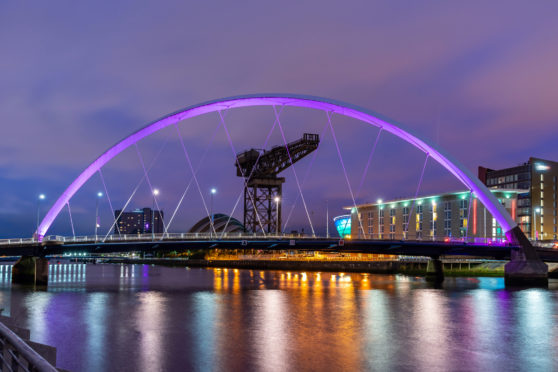
An expert on Irish terrorism has warned the threat from dissidents remains “lethal” despite the downgrading of the national threat level last week.
Belfast-born political historian Dr Richard English, a professor at Queen’s University, said there is always a possibility that republican terrorist groups will bomb Britain.
And he warned that the prospect of a hard border in Ireland after Brexit has increased tensions in Northern Ireland – and in Scotland’s biggest city.
In September the Sunday Post revealed how the Scottish Government feared that “changes in the levels of sectarian behaviour in Northern Ireland could impact here. “
Dr English said: “Irish tensions have been inflamed. Relationships were not good in the run up to the Brexit vote and they’ve got worse since.
“The Irish republicans are feeling hopeful they’re on the march towards the ultimate goal of leaving the UK, and that always causes unionist anxiety to rise, which inflames tensions further.
“What has happened in Glasgow reflects what has happened in Northern Ireland where tensions and relationships have got worse, not better.”
Scotland was not bombed by the IRA during the Troubles and a new BBC documentary series has examined the support some Scots offered the terrorist group. The War Next Door also recalls fears violence could spill over into Scotland in the 1970s and 1980s.
Dr English, who has authored several books about Irish terrorism, said: “There were occasions where IRA units would stay in Glasgow and go on operations in England, so there was a lot of through traffic, if you like.
“I think bombing Scotland would still be seen [by dissidents] as sending the bomb to the wrong target. I think the likelihood is England will continue be the focal point for any fresh attacks.”
Dr English was a keynote speaker at a counter-terrorism conference at the University of St Andrews this week.
The two-day event, which also attracted former senior figures in the security service Mi5, was held a few days after the UK’s terrorism threat level was downgraded from “severe” to “substantial”. Severe means an attack is highly likely. Substantial means an attack is likely.
The level is set by the Joint Terrorism Analysis Centre (JTAC), a coalition of experts who meet at MI5’s London HQ on the River Thames.
The system used by the JTAC was changed in July to reflect the threat posed by all forms of terrorism, irrespective of ideology. There is now a single national threat level describing the threat to the UK, which includes Islamist, Northern Ireland, left-wing and right-wing terrorism.
However a separate threat level is set for Northern Ireland, which remains at “severe”, meaning an attack from dissident groups is highly likely.
Dr English believes the downgrading of the national threat level is because attacks by jihadists are less likely to target Britain. MI5 say 24 attack plots have been thwarted since the Westminster attack in March 2017.
Dr English said: “The fact that ISIS seems to be on the ropes has made a significant difference to what people think the threat is likely to be. In terms of non-Irish related terrorism, it’s occasionally awful but it’s something that’s mostly containable.
“I think the Northern Ireland threat is higher but it’s obviously smaller in that it’s mainly focussed on Northern Ireland itself. So, I think that two-tier threat level in the UK is something that will endure.”
There are four main dissident republican groups in Northern Ireland, according to the security service – the new IRA, the Continuity IRA (CIRA), Óglaigh na hÉireann (ONH – which recently split into two factions ONH and IRB), and Arm na Poblacht (ANP).
Dr English said: “It’s hundreds of people. The new IRA is the most significant of those groups.
“Northern Ireland remains a place where terrorism is a lethal threat. The dissident groups will continue whether or not Brexit comes or goes.”
The academic added that a bombing campaign in Britain similar to the carnage seen during The Troubles in the 1970s and 1980s is unlikely because networks have been disrupted, but he warned it is “always a possibility”.
He said: “You can’t rule it out because there is a very long tradition for the Provisional IRA of bombing Britain and I think that tradition will continue.”

Enjoy the convenience of having The Sunday Post delivered as a digital ePaper straight to your smartphone, tablet or computer.
Subscribe for only £5.49 a month and enjoy all the benefits of the printed paper as a digital replica.
Subscribe